Pfalz (Palatinate) is the second largest of Germany’s wine regions. Weingut von Winning is one of the better-known quality producers in Palatinate. Von Winning has a wide range of wines with everything from very affordable ones to exclusive rarities. When Andreas Hütwohl, winemaker at von Winning, came to Sweden he met with BKWine’s reporter Ulf Bengtsson to present a quite large number of his wines, including some surprises.
Once again we need to be reminded that German wines are much more than just the Mosel, Rheingau, Nahe, Rheinhesen, Ahr, Franconia (Franken), Baden, Mittelrhein, Württemberg, Hessische Bergstrasse, Saxony (Sachsen) and Saale-Unstrut. There is also Palatinate! Or Pfalz, to use the German name. I was reminded of this this when I recently met over lunch the winemaker Andrew Hütwohl of Weingut von Winning. Andreas Hütwohl is one of three winemakers at von Winning. He guided me through the tasting. Super nice!
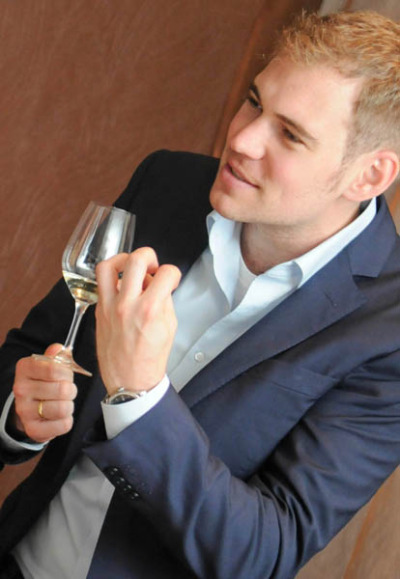
The Pfalz Wine Region
Geographically Palatinate is located just south of Rheinhessen with Nahe northwest and Baden southeast. Just southwest of Heidelberg, to put it simply. Or just south east of Kaiserslautern, for all you who are football fans.
Palatinate is with its more than 23,000 hectares is Germany’s second largest wine producing districts in terms of both volume and acreage. Rheinhessen is the largest. Total production weighs in at about 2.4 million hectolitres and the mix between white and red is about 60/40. Compare with, for example, Mosel which clocks in at about 9,000 hectares or why not with Bordeaux that has 120,000 hectares?
The Weingut Von Winning winery
Weingut von Winning was founded in 1849 by Friedrich Deinhard from Koblenz, who had inherited a wine trading business and a sekt (sparkling wine) making activity from his father. Through another inheritance he came into possession of vineyards in the Palatinate and started to develop the property there. Friedrich Deinhards son Andreas took over in the 1870s and continued the development towards quality wines. When he in turn died in 1907 his son in law, Leopold von Winning, took over the business.
Leopold von Winnings developed the winery to become a leading quality producer. He also engaged in the Verband der Naturweinversteigerer, the forerunner of the VDP. Sadly, he passed away in 1917 after which the vineyards were not very well taken care of. Until 2009 the wines were sold under the name Weingut Dr. Deinhard.
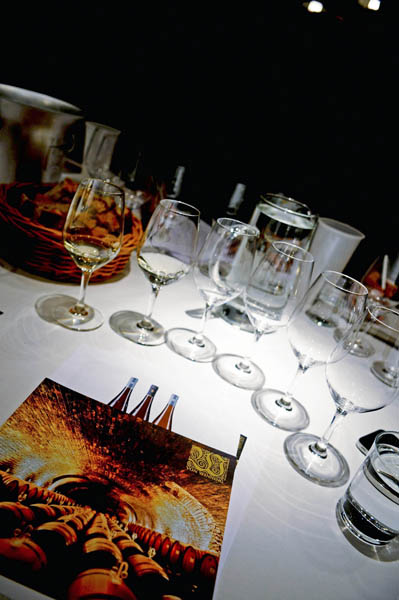
The vineyards slumbering life ended around 2000, when Achim Niederberger bought the company. At the same time he acquired Bassermann-Jordan and Reichrat von Bühl and began to invest heavily in the three estates. Stephan Attmann was hired as winemaker and manager, and in 2008 the name was changed to Weingut von Winning.
In total Von Winnings has 50 hectares, of which 10 hectares are classified as GG (grosse Gewächs). 80 percent riesling, a production of about 260,000 bottles per year. Gault & Millau named Stephan Attmann “the newcomer of the year” in both 2011 and 2012. Von Winning became Riesling champion in Germany in 2012 in Vinum’s big competition and the wines have received several honours and have been hailed by, among others, The Wine Advocate’s David Schildknecht. The pieces are slowly starting to fall into place.
Massive tasting; elegant wines
But enough about that! After Andrew Hütwohl’s presentation of the company I was, as usual, eager to try the wines. I have before me, as usual, a lot of glasses but when I check the test list I see that it contains 25 wines! This will be a massive tasting then… Well, well, it will be very interesting!
First up is not the entry-level wines, but we start somewhere in the middle of the range.

Paradiesgarten, Reiterpfad and Grainhübel, 15-25 euro
The first round consists of wines in the price range of roughly 15-25 euro. We get 2011, 2012 and 2013 of wines from the vineyards Paradiesgarten, Reiterpfad and Grainhübel. It is clear that the wines have many similarities, but they are still very different. The wines of Paradiesgarten are more fruitier and I find something that a bit like candy notes. A lot of exotic fruit, some peach. Here and there I get some sauvignon blanc vibes, gooseberry and blackcurrant leaves. Very nice!
The Reiterpfad wines tend more towards apple, even if the 2011 the Von Winning Rupertsberger Reiterpfad had some botrytis and exotic fruit in the aroma. The wines from Grainhübel have a noticeable barrel character, high acidity, clearly more appely, a little more fiery. The 2012 Von Winning Deidesheimer Grainhübel lacks a bit of personality, while the 2013 is really super delicious! More of that please!
In the structure the 2012 wines are elegant, tighter, and with more acidity. The 2013 wines seem more full-bodied and slightly sweeter. In terms of flavours the 2012 has more smoke, oak and pepper, while 2013 tends more towards gooseberry and candy. Best in this flight is the 2013 Von Winning Deidesheimer Grainhübel Erste Lage Riesling.
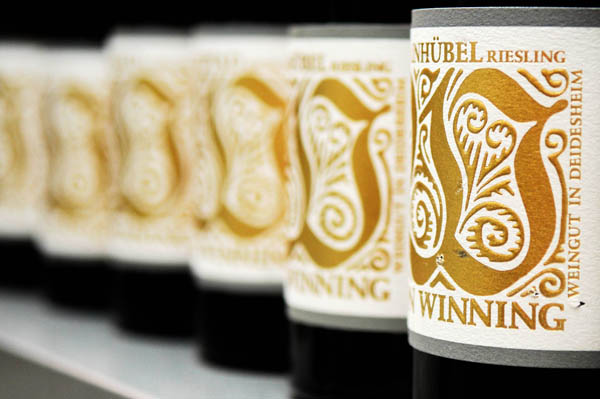
Kalkofen, Langenmorgen and Ungeheuer, 25-33 euro
We go up one notch in quality and taste wines in the range of 25-33 euro. Here we get to wines from the vineyards Kalkofen, Langenmorgen and Ungeheuer. First the 2013 Von Winning Kalkofen Grosse Gewächs Riesling. Super delicious! Perfect balance, no oak, with gooseberry and blackcurrant leaves. The balance is almost total. Super delicious wine that just gets better and better with some air and with higher temperature. It is clear that we have put in another gear. Many, including me, say this wine is the best in the tasting. Clear recommendation!
Both wines from Langenmorgen and Ungeheuer are really nice. They are more citrusy in character. The pattern from above does not seem to repeat itself, in this flight it is the 2012s that are somewhat oily and more open and the 2013s are more acidic and closed. So put them away for a few years in the cellar.
Pechstein and Kirchenstück, 40-55 euro
We move up one notch more and try the top wines. Now we are in the price range of 40 to 55 euro. The wines come from the vineyards Pechstein and Kirchenstück. Incredibly elegant, austere wines. Huge freshness, almost like champagne! A little difficult to assess today, the acidity is massive. I would love to follow them over a few days. Then I think I would get a better picture of their potential. For example, the 2012 Von Winning Forster Kirchenstück GG Riesling. Wow, what a wine! I would like to explore this in more detail.
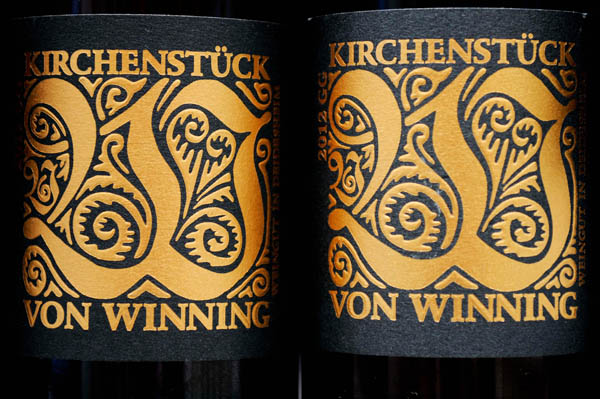
Odd birds, odd wines
We continue the tasting with some slightly odd birds. Odd bird number one is…
…a sauvie of course! What’s with the German winemakers and sauvignon blanc? It seems that everyone has a few rows of gooseberry wine planted, and they all seem equally childishly delighted in their sauvies. Well, OK then. The 2011 Von Winning Sauvignon Blanc I opens with some clear barrel notes and then it pours over of charcuterie. No black currant tones. The 2011 Von Winning Sauvignon Blanc 500 are packed with “everything” and slightly smoky. Nice try but all I can think is “why?” Why, on prime riesling soil, plant sauvignon blanc and why then remove most of what you like about the sauvies? Hmmm, well… Anyway.
Odd bird number two is…
…a pinot noir. It was perhaps to be expected, and maybe not so odd. 2012 Von Winning Pinot Noir II is, unlike the sauvignon blanc, really delicious. High acidity, but in a good way, balanced, playful. Delicious! This I would like to buy more of.
And the last odd bird…
…is a Scheurebe. 2010 Von Winning Scheurebe is sweet, buttery, aromatic. Very nice.
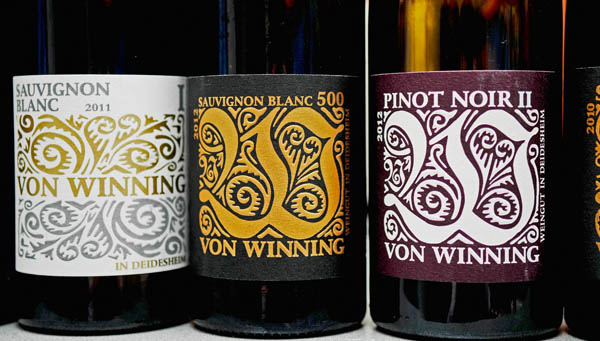
The budget versions, 10-15 euro
We end the tasting with the entry-level wines, priced in the range of 10-15 euro. We have 2012 and 2013 of Von Winning Riesling and 2012 and 2013 of Win Win Riesling. Here I am completely sold on Win Win! Young, fresh, delicious! Gulpability personified.
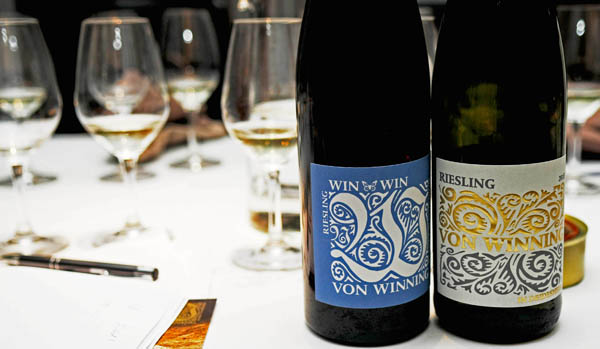
In summary it was a very rewarding tasting and a new wine experience. Von Winnings wines are austere and elegant, they have a lot of freshness, sometimes appely, defined by their high acidity. Often a pleasant hint of oak character. Most have some clear sauvignon blanc notes, but that is something that young Riesling wines often have. They should be excellent food wines.
The tasting and lunch was organized by Intermondi, von Winning’s importer in Sweden.
Price estimates are based on retail prices in Sweden.
Ulf Bengtsson writes about wine under the pseudonym Red Scream on his blog Red Scream and Riesling, on wine, food, photography and other things that are important in life. Like detective novels, taking long walks in Stockholm and the occasional burst of exercise. He is also on Facebook.
[box style=”rounded” border=”full”]If you really want to get the greatest enjoyment from the wine then you should experience it on location. Come on a wine tour to one of the world’s wine regions with BKWine.
Travel to the world of wine with the experts on wine and the specialist on wine tours.
Wine tours like no one else can do.
[/box]









